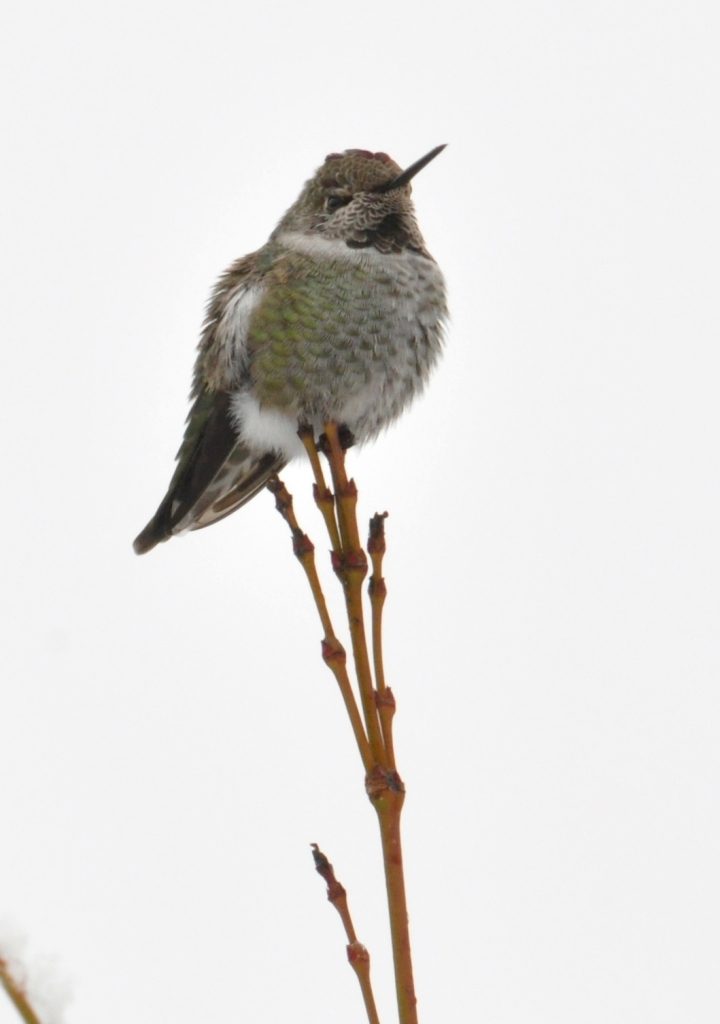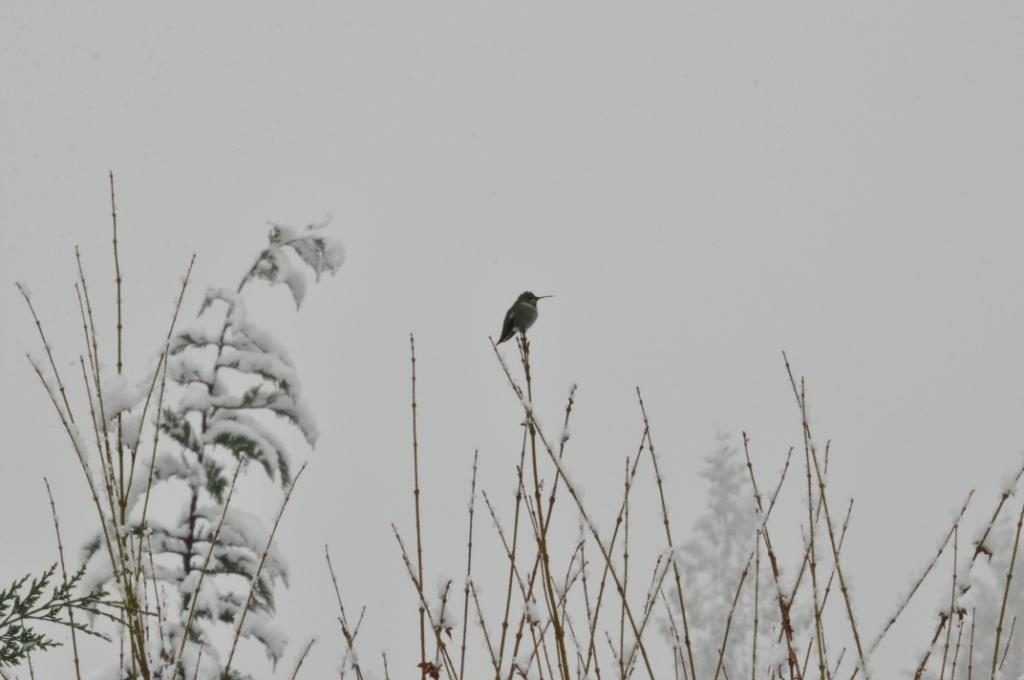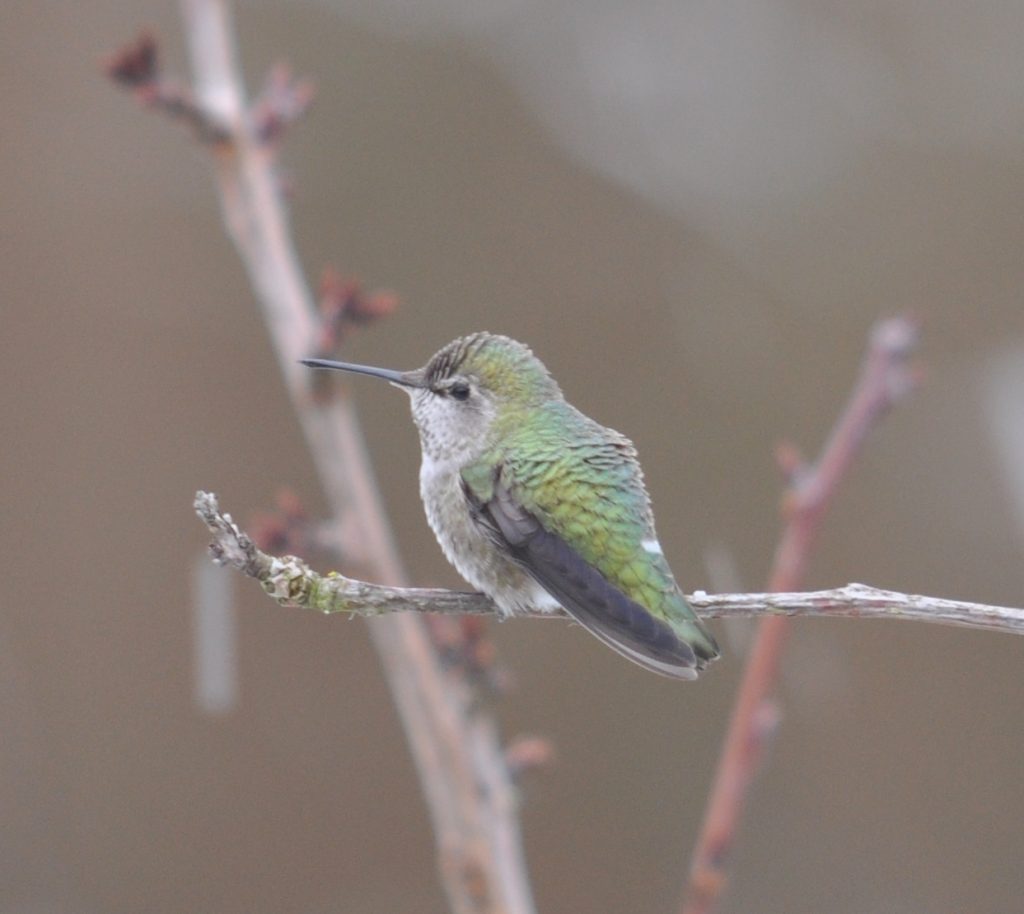When we think of hummingbirds we think of flowers, spring, summer, sunshine, and warm weather. But here in the Northwest we have a unique species of hummingbird that breaks the rules. Anna’s Hummingbird, Calypte anna, is found up and down the West coast into British Columbia. Oh they love the warm weather alright and you’ll see them throughout the summer, but this tiny hummingbird is a year round inhabitant that toughs out some real frigid winter temperatures. This is a fairly recent development. Depending on the source consulted Anna’s hummingbird began to extend its range northward from California in the 1950s or 1970s. What exactly contributed to this is unknown but one reasonable explanation is the increase in human population in the area and the resultant expansion of feeders and backyard gardens the bird is so fond of.
The first photo with the puffed up feathers was taken in January 2017 at a temperature of about 20 degrees. This tough little bird was out there every day for about a week in these same low temperatures. Hummingbirds are able to tolerate this by going into a semi hibernation state. Other photos show a male displaying color and a female displaying the common metallic green of the species.
If you have a feeder or have been around these hummingbirds for any length of time their noticeable and constant twittering is unmistakable. They are vocal little things. Every now and then, however, you’ll hear a puzzlingly loud, sharp chirp. I am familiar with the calls of just about every bird in my Northwest backyard and this strange chirp confused me for some time. One day I was absolutely determined to locate the source of it. Much to my surprise it turned out to be an Anna’s hummingbird. According to one source the males make this sound during their dive bombing mating display. At the conclusion of their high speed descent they suddenly spread open their closed tail feathers and mechanically produce this unique sound. I cannot say that this matches my observation, however. The bird I observed seemed to produce this sound while sitting on a branch. Was it made by a sudden expansion of the tail feathers? Perhaps. I hold open the possibility as well that my own observations were mistaken; maybe a male hummingbird was “chirping” somewhere nearby and the bird I was watching reacting to that. We have a lot of hummingbirds around here. More to follow when the weather warms.
One final note about this tough little avian. The bird was named after Anna Debelle who later became Anna Massena by marriage and “Grand Maitresse” to the Empress of France in the 1880s. Exactly how this relatively unknown woman became associated with the bird that now bears her name requires further research but I suspect it has something to do with whoever first described the bird. I leave it to the reader to look further into the history of Anna Debelle. I’ll look further into her hummingbird.
And check into this great bird site: https://www.worldbirds.org for this article: how to attract hummingbirds
References:
Our Pacific Northwest Birds and Habitat, Craig and Joy Johnson 2011
Cornell Lab of Ornithology
Audubon Guide to North American Birds
Hummingbirds.net
SF Gate
Wikipedia
<
>





Leave a Reply
You must be logged in to post a comment.